Recently, I've been more focused on traveling and trying out different beers than sharing my experiences through blogging. However, let me take you on a journey to the Chyše Castle and its brewery - my friends and I decided to stop by for some refreshments on our way back from visiting the Church of Ghosts a couple of weeks ago. Located at the edge of the Karlovy Vary region in the Sudetenland, Chyše was mostly inhabited by Germans before the majority of them were expelled after WWII. This resulted in a 50% drop in the local population between 1930 and 1950. Presently, Chyše is more of a small village with only 550 residents. Nonetheless, it boasts a magnificent castle, a crafted brewery, and a sizable monastery, unfortunately not accessible to the public due to its poor condition. Let's begin with the castle.
Poslední dobou zase více cestuju a ochutnávám piva, než že bych o tom psal. A tak se nechte pozvat na zámek Chyše a sousední zámecký pivovar Prokop. Zastavili jsme se tam před pár týdny cestou z kostela duchů. Chyše je na okraji Karlovarského kraje, ale stále ještě v Sudetech, a tak tu tradiční většinu tvořila německy mluvící populace, která byla po válce vyhnána. Počet obyvatel klesl mezi roky 1930 a 1950 o více než polovinu, a pak už nikdy pořádně nevzrostl. Dneska má Chyše pouhých 550 obyvatel, přesto se může pochlubit krásným zámkem, řemeslným pivovarem a rozsáhlým klášterem, který je ale v mizerném stavu, a tak není přístupný veřejnosti. Ale začněme hradem.

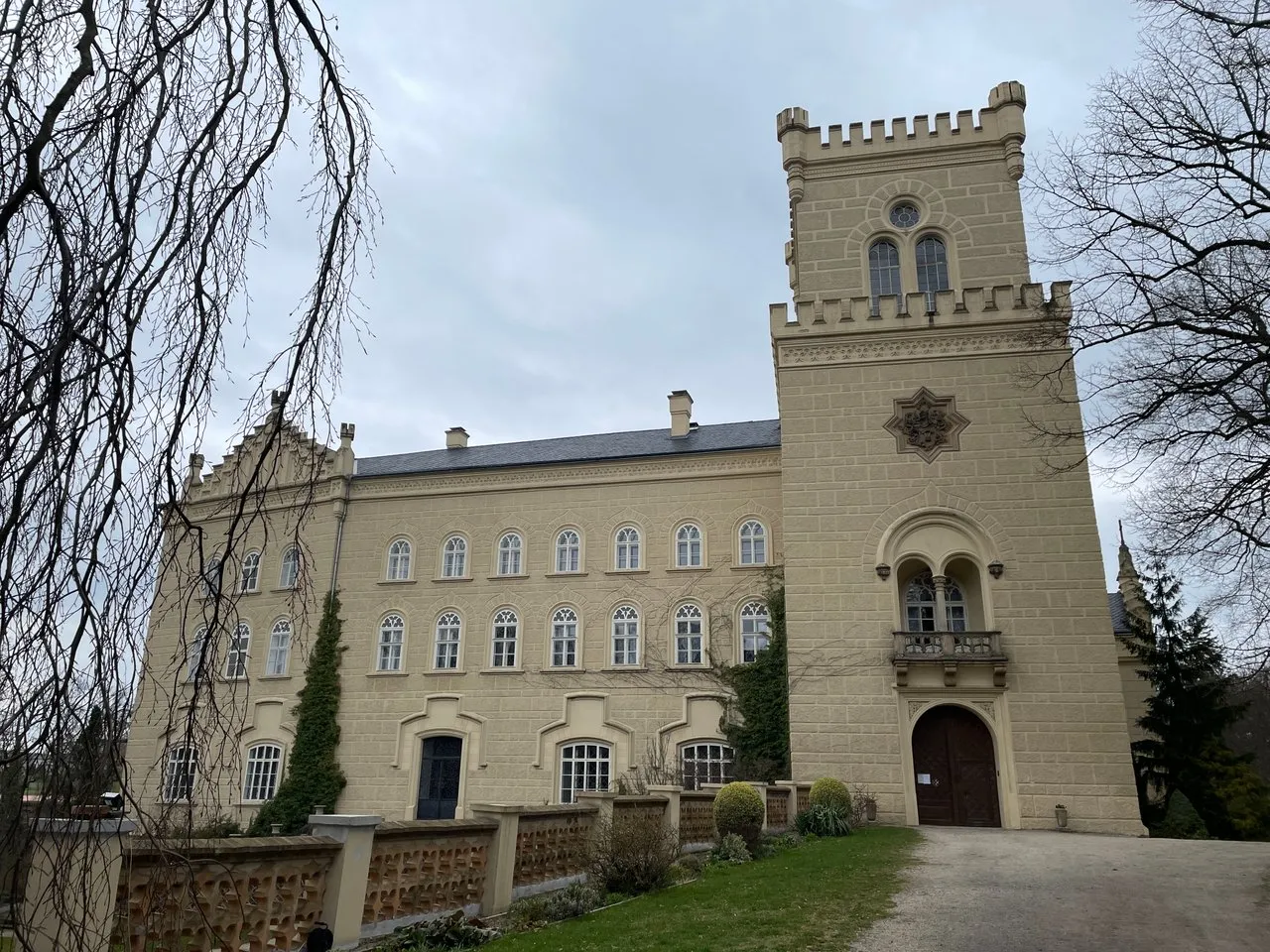
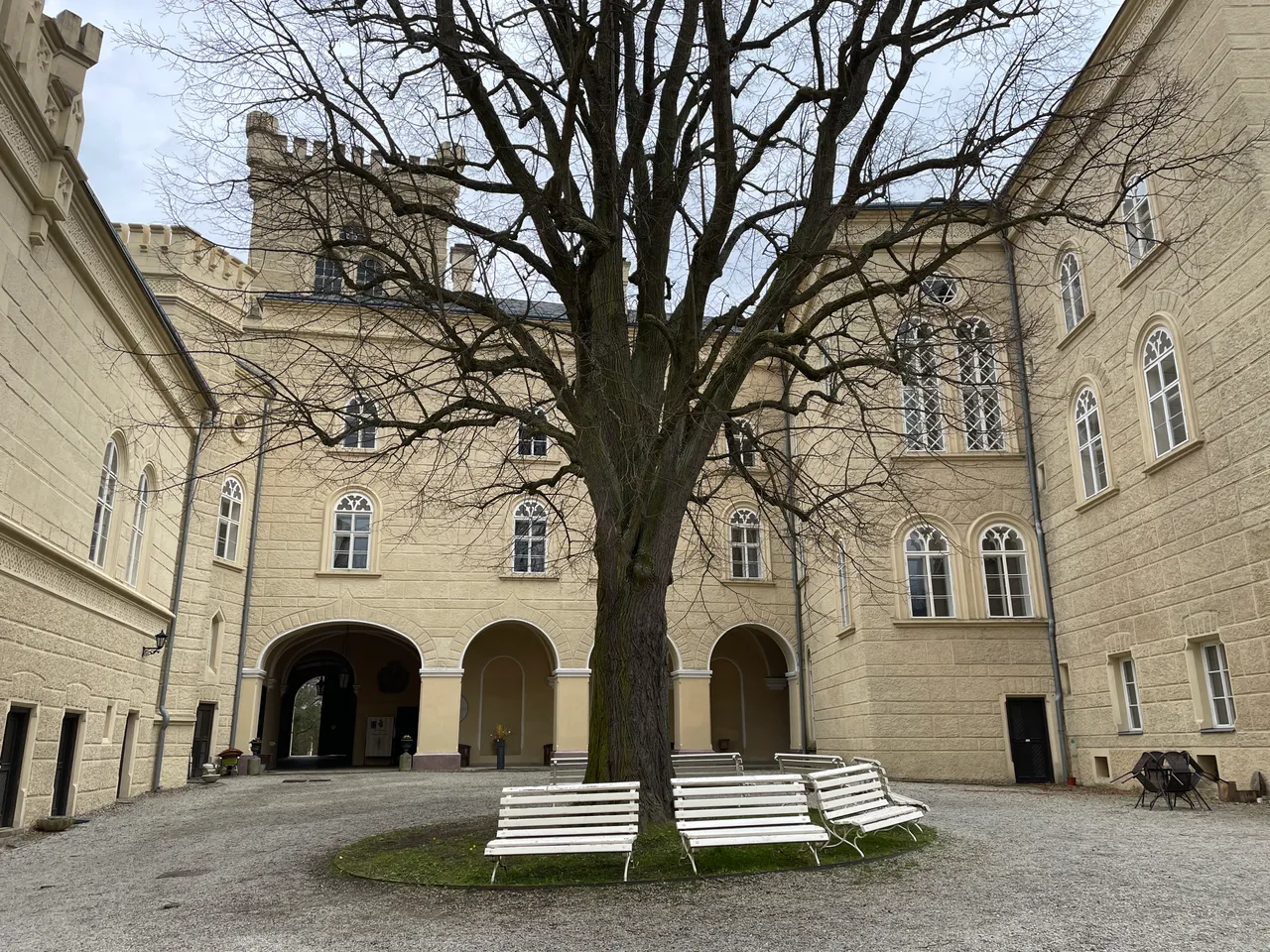
The castle, originally built as a fortress in the 12th century, changed ownership numerous times throughout the following centuries, as medieval Bohemia was far from being the most peaceful and secure place. Nevertheless, the #beersaturday community should take note that the local brewery was founded in 1580 and dedicated to Saint Procopius of Sázava, a Czech canon and hermit whose name it still bears, albeit in a simplified form Prokop. It's worth mentioning that having the "Brewing right" was a highly sought-after privilege for centuries, with both royal towns and manor lords vying for it.
Hrad je původně tvrzí ze 12. století a během let měnil majitele jak na běžícím pásu. Středověké Čechy nebyly zrovna vzorem stability. No, a #beersaturday komunita by měla vědět, že místní pivovar byl založen už v roce 1580 a pojmenován po Sv. Prokopovi ze Sázavy, jehož jméno ostatně nese dodnes. Mimochodem, právo várečné, to bylo něco. Bažili po něm královská města i panstvo, alespoň pokud vím. Hádám, že @krakonos by na tohle téma mohl sepsat zajímavý traktát.
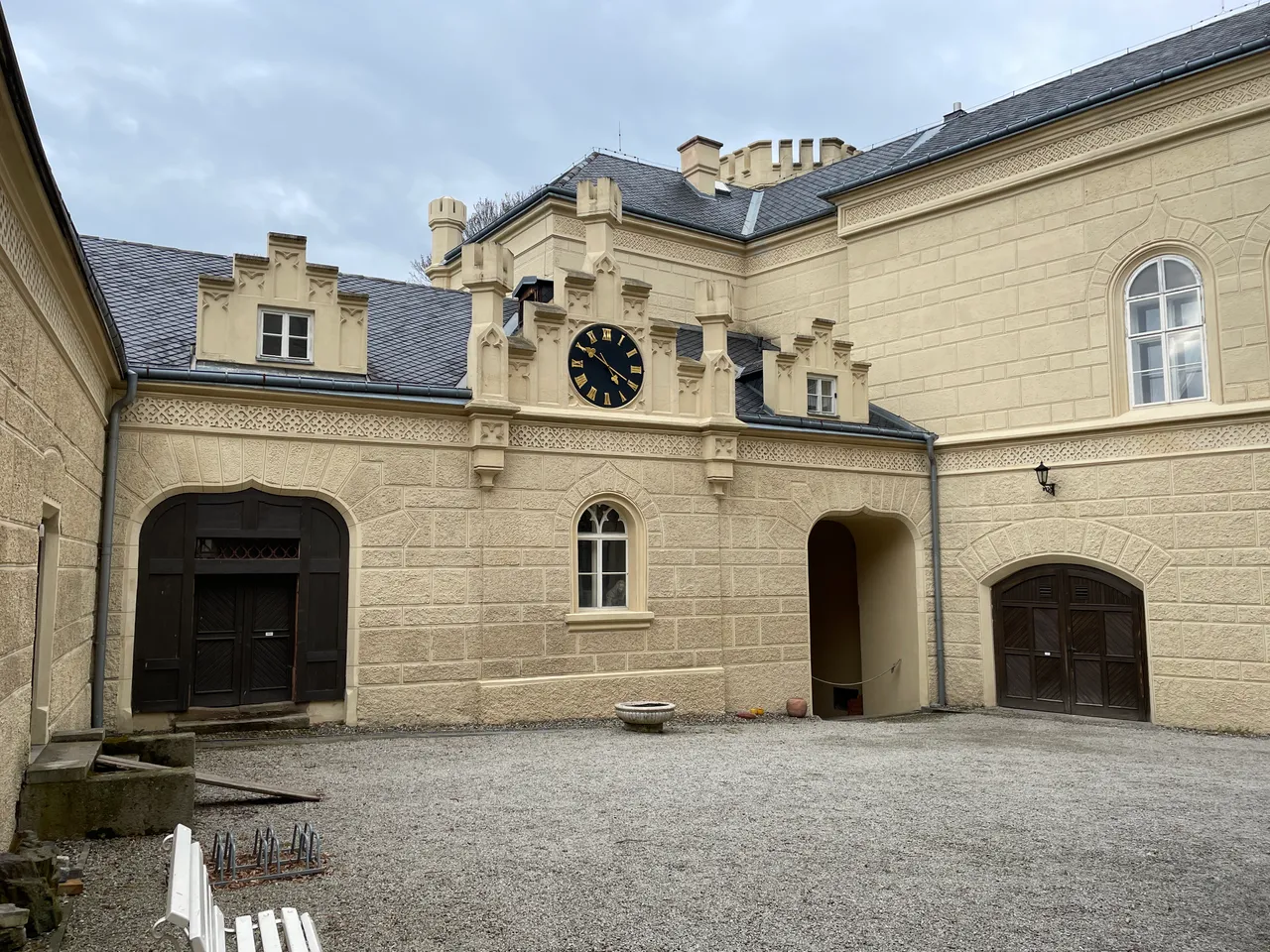
The present-day castle, which is more of a chateau, has a striking Lego-like appearance due to its recent extensive Gothic Revival renovation. The trenches that once surrounded it have been filled in, and it now sits in a vast park.
Dneska je z hradu zámek a na první pohled vypadá jako vystavený z Lega. Na jeho vzhledu se nejvíce podepsaly novogotické úpravy, a pochopitelně také nedávná rekonstrukce. Příkopy kolem byly zasypány, a tak je dnes zámek obklopen rozsáhlým parkem.

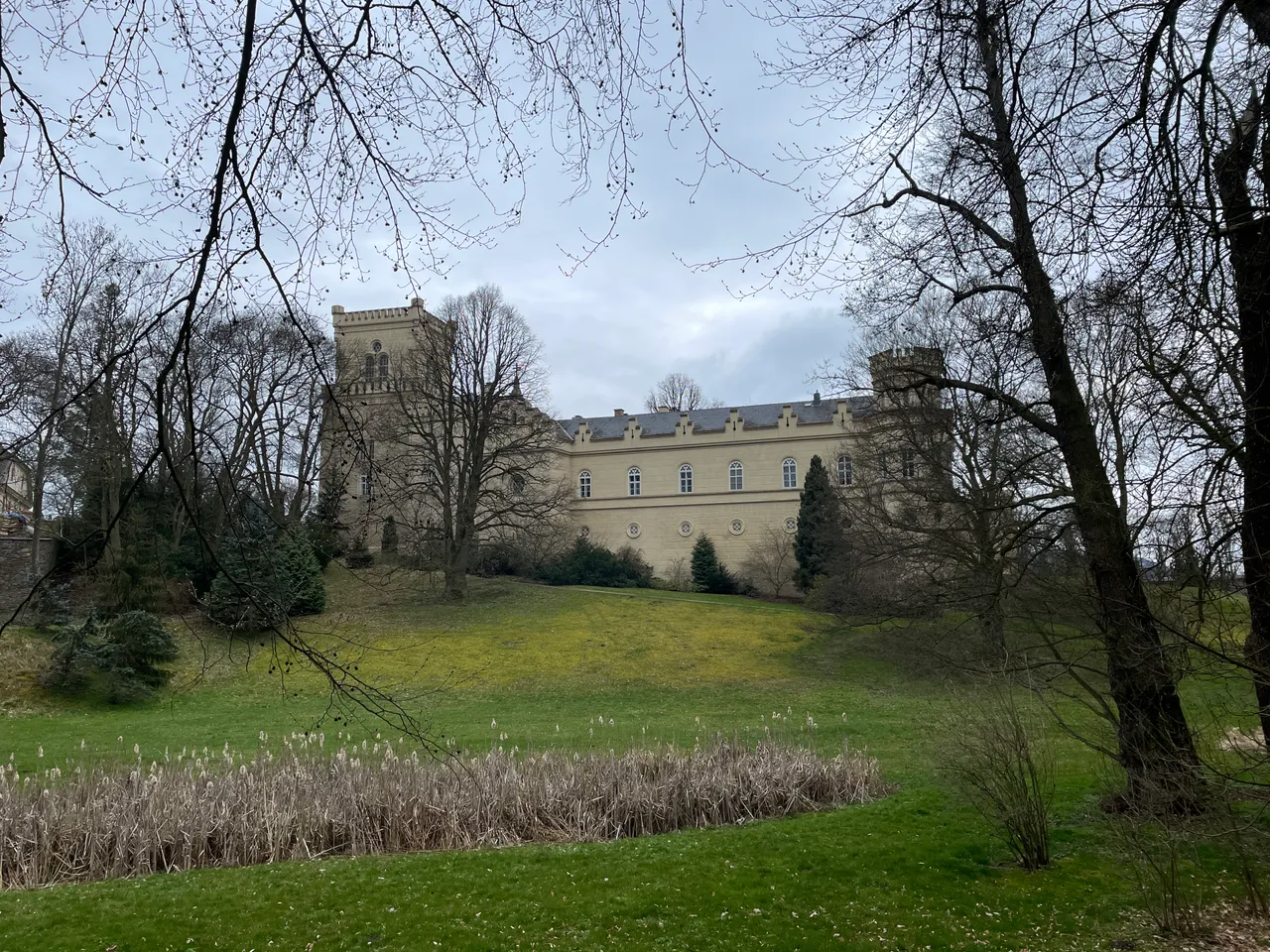
The brewery, located in an adjoining building dating back to 1839, was reopened in 2006 and now offers not only a restaurant but also accommodation in the attic rooms. I must say I was quite taken with the historical microbrewery's design. It's adorned with artifacts from its past and features wooden furniture that perfectly complements the surroundings. The brewing tanks are located in one corner of the restaurant, while most of the beer brewing takes place in the cellars.
Pivovar je v sousední budově postavené v roce 1839. Znovu otevřen byl v roce 2006 a kromě restaurace nabízí i ubytování v podkrovních pokojích. Design restaurace se trefil do mého vkusu, takové minipivovary mám rád. Na stěnách a oknech jsou drobné artefakty z dob minulých a nábytek je dřevěný. V restauraci jsou vidět varné tanky, ale vaření a ležení se odehrává hlavně ve sklepech.

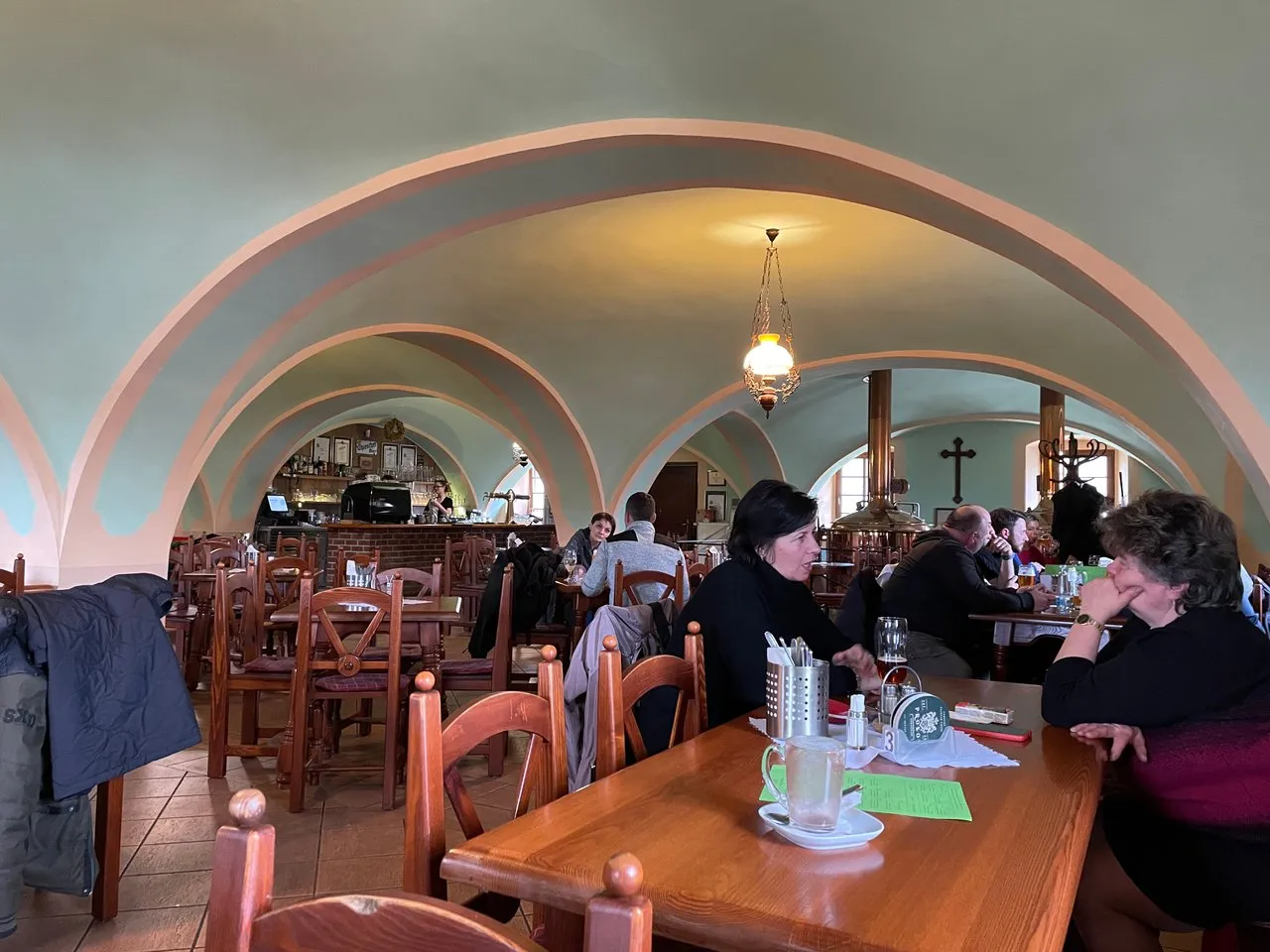
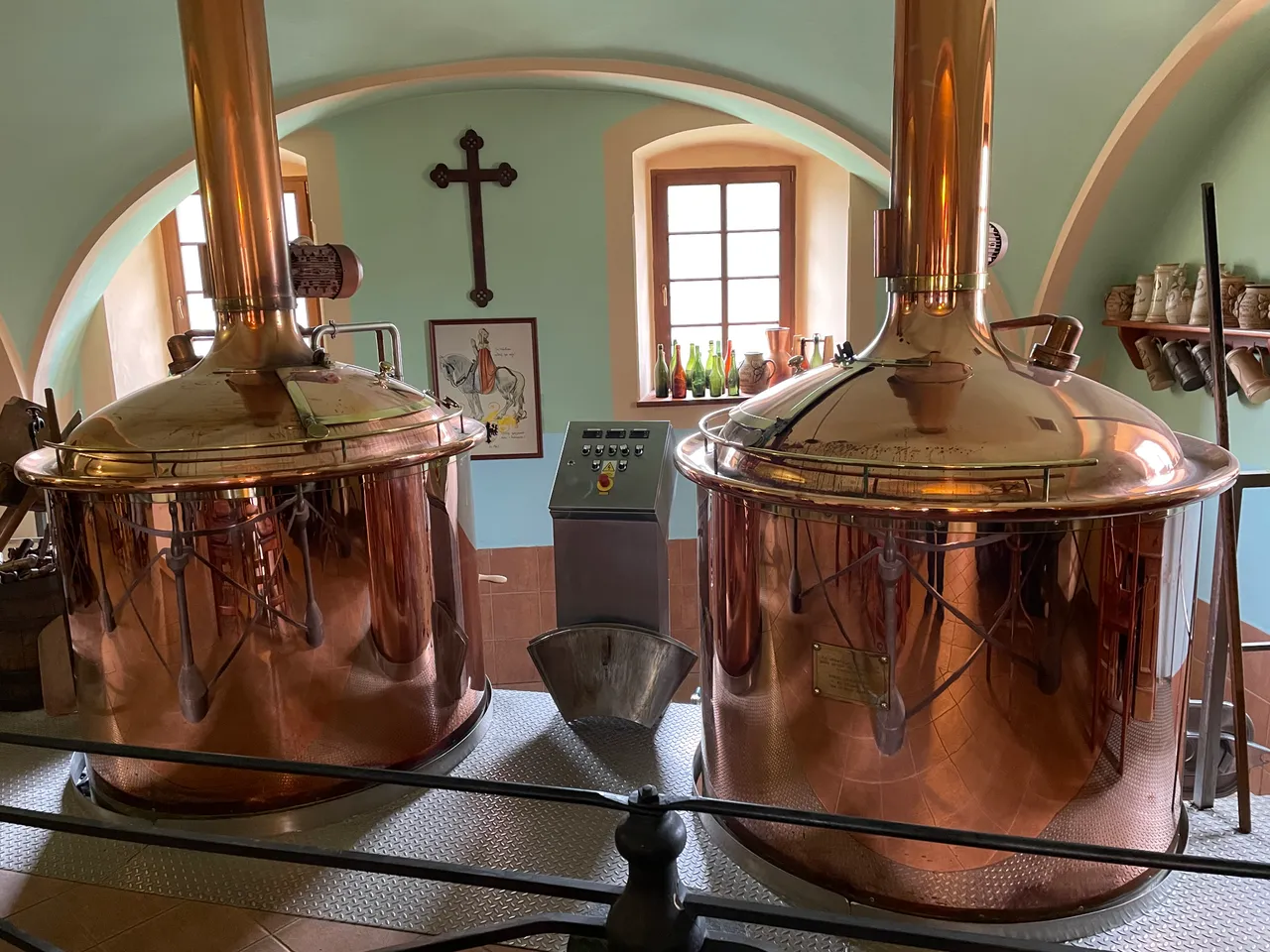
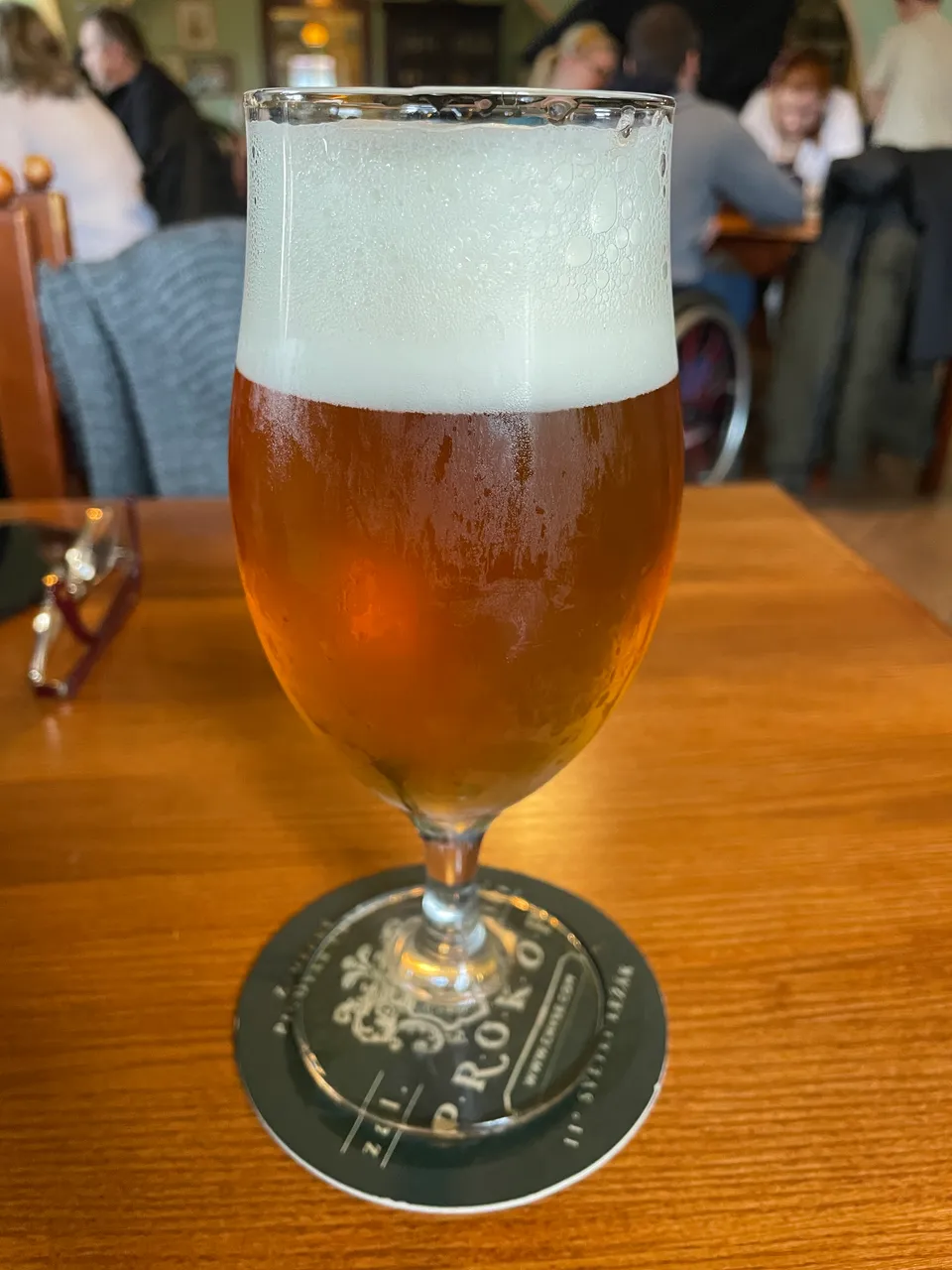
Now, let's talk about the beers. We had the opportunity of sampling three different brews, starting with an Easter special: a Bohemian honey lager. Typically, this type of beer is a regular lager with a touch of honey added to the malt, giving it a distinctive honey aroma instead of the usual malty one. While this honey lager was an excellent representation of its style, I must say that the honey note could have been more prominent. Nonetheless, it was still an enjoyable and easy-to-drink beer.
No, a teď k pivům. Ochutnali jsme celkem tři a začali jsme velikonočním speciálem - medovým ležákem. Tenhle typ piva se většinou vaří tak, že do sladu přimícháte trochu medu, a tak v něm typické sladové aroma nahrazuje medová chuť. Myslím, že místní medový ležák byl skvělým zástupcem svého stylu, i když bych řekl, že med mohl být cítit o malinko víc. I tak je to ovšem skvělé a hodně pitelné pivo.
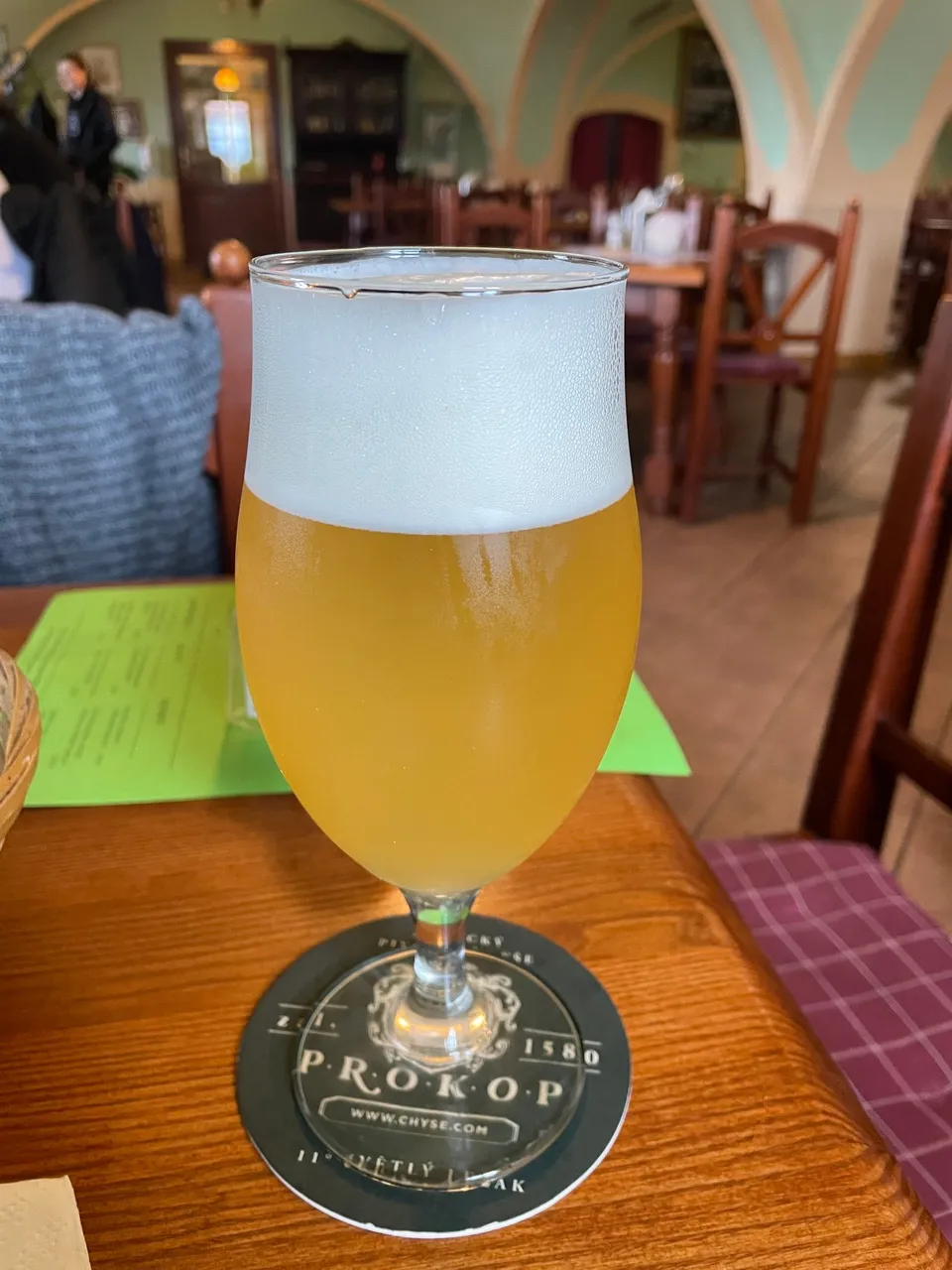
As those of you following my #beersaturday posts may know, I have a particular fondness for wheat beers. So, it was only natural that I had to give the local Witbier a try. This fruity wheat lager was less distinct than what one would typically expect from a beer of this style, with a subtle hint of rare elderberry aroma. While it wasn't the best Witbier I've ever had, it certainly wasn't the worst either, and I'd give it a solid 7/10 rating. That being said, it was still the worst of the three beers we sampled. Well, "least good" seems like a more fitting description.
Jak ti, kdož čtou mé #beersaturday posty vědí, mám velkou slabost pro pšeničná piva. A tak jsem přirozeně musel vyzkoušet také místní Witbier. Tohle ovocné pšeničné pivo bylo trochu plošší, než bych vzhledem ke stylu čekal, a mělo jemné bezové aroma, což je hodně vzácné. I když to nebyl nejlepší Witbier, který jsem kdy pil, zdaleka nebyl nejhorší. Dostal by ode mě krásných 7/10. I tak to bylo nejslabší pivo toho večera. I když "nejméně dobré" je asi trefnější popis.
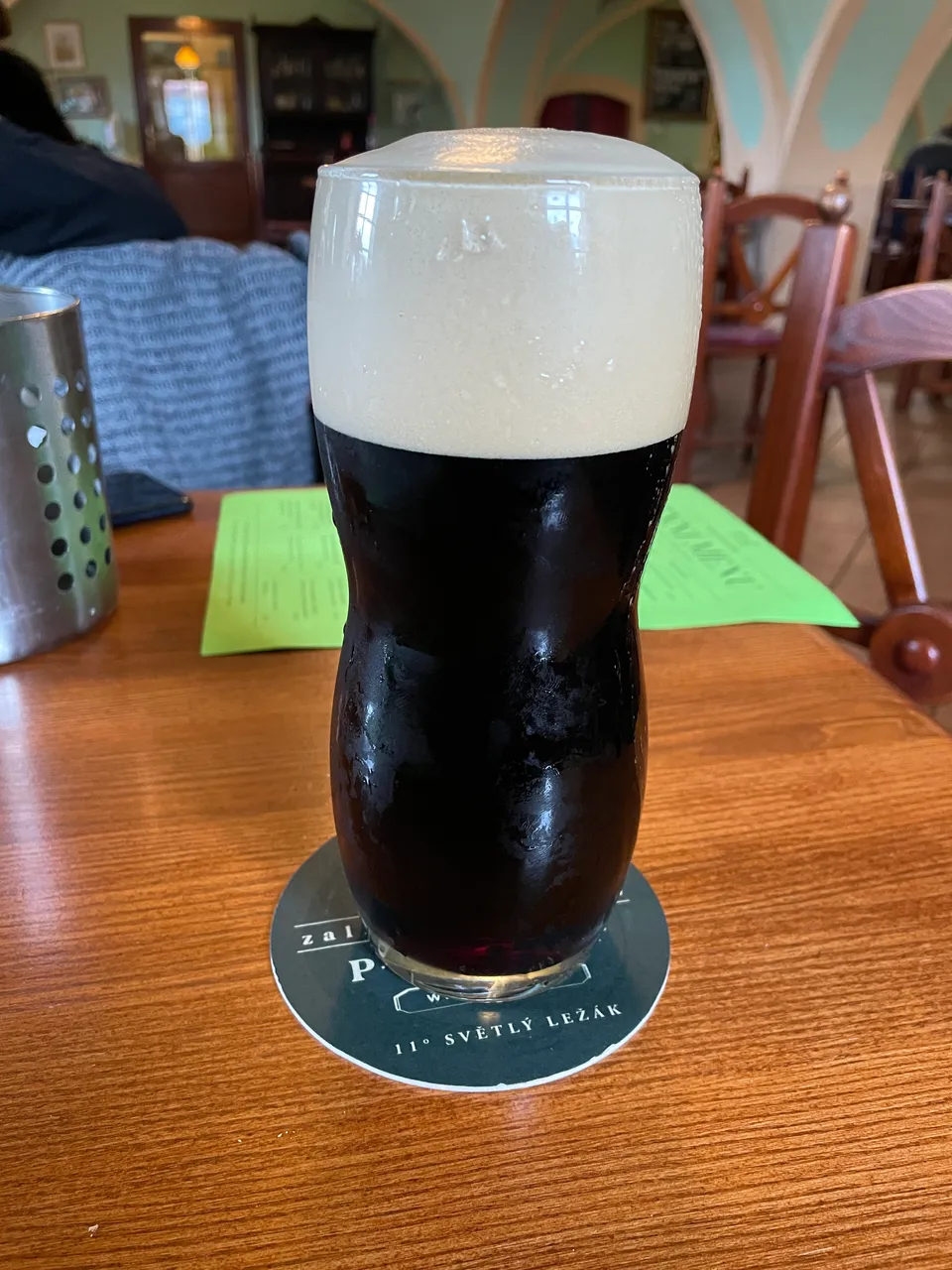
The star of the evening was undoubtedly the dark lager (we typically name dark lagers after women, but this one is simply called Prokop, like all the other beers). It was rich and dense, dark as my soul, and had a perfect blend of roasted cocoa, coffee, and malt flavors. For someone like me, it was an absolute delight. I even purchased a bottle to take home, or so I thought. However, when I opened the bottle several days later, I realized it was a semidark lager instead. Anyways, this dark lager alone could make one to Chyše.
Hlavní hvězdou večera byla tmavá dvanáctka. Všimli jste si, že tmavá piva většinou pojmenováváme ženskými jmény? Tohle je každopádně Prokop, stejně jako všechna ostatní místní piva. Bylo hutné a silné, černé jako moje duše a skvěle se v něm snoubily chutě praženého kakaa, kávy a sladu. Pro někoho jako jsem já to byla slast. Dokonce jsem si koupil láhev na doma, tedy alespoň jsem si to myslel. Pak se z toho vyklubal polotmavý ležák. V každém případě i samotný tmavý Prokop může být důvodem, proč se vypravit do Chyše.
